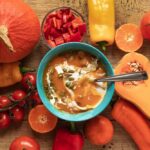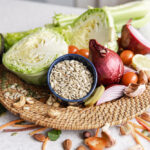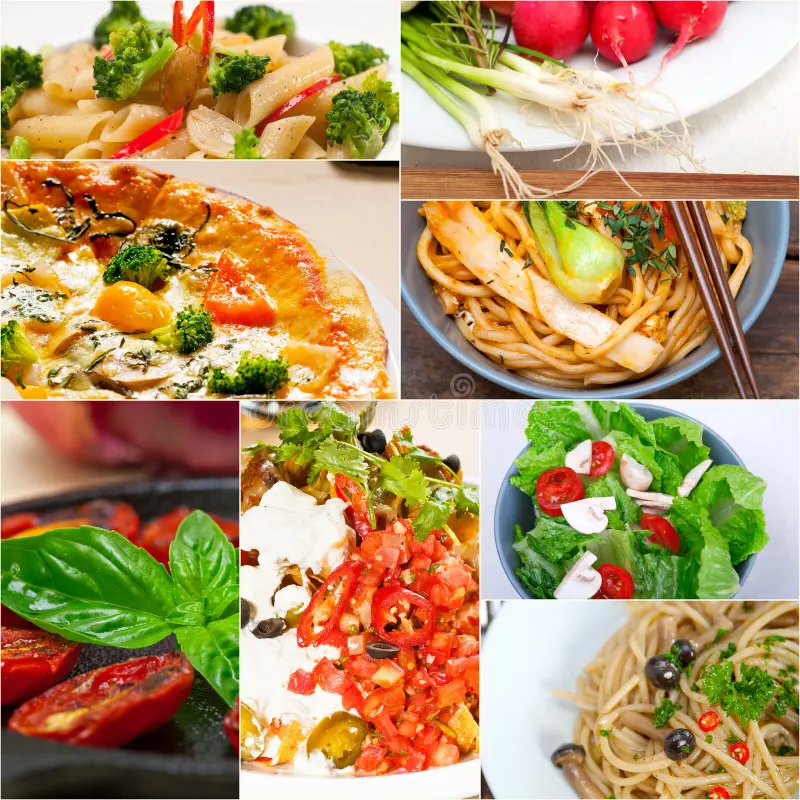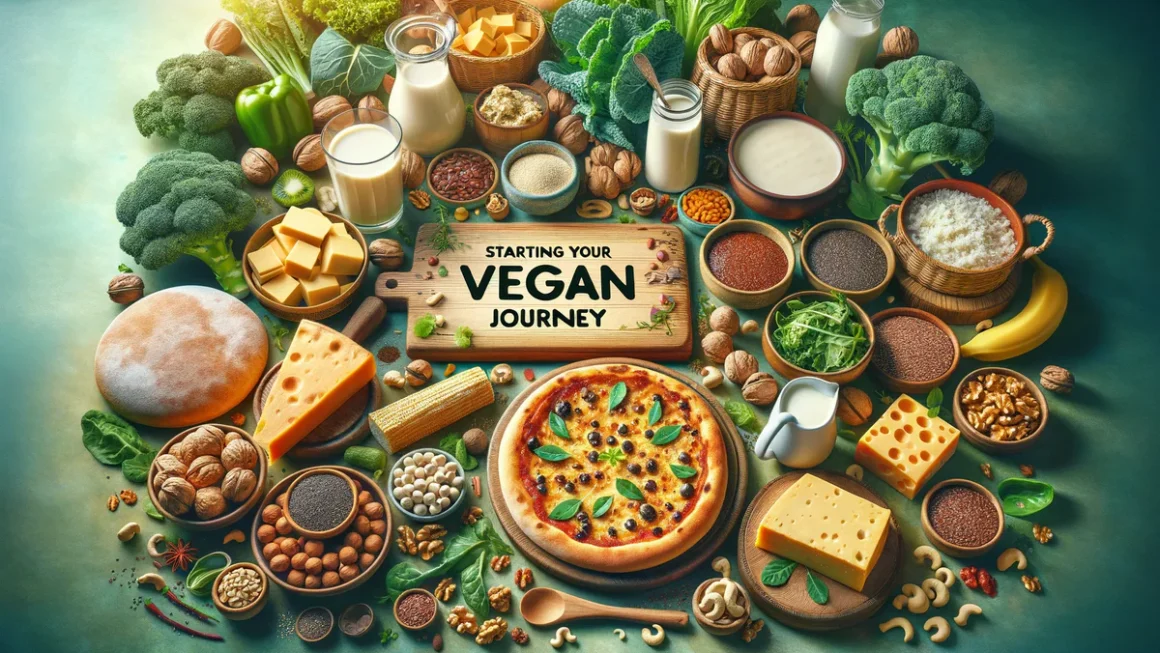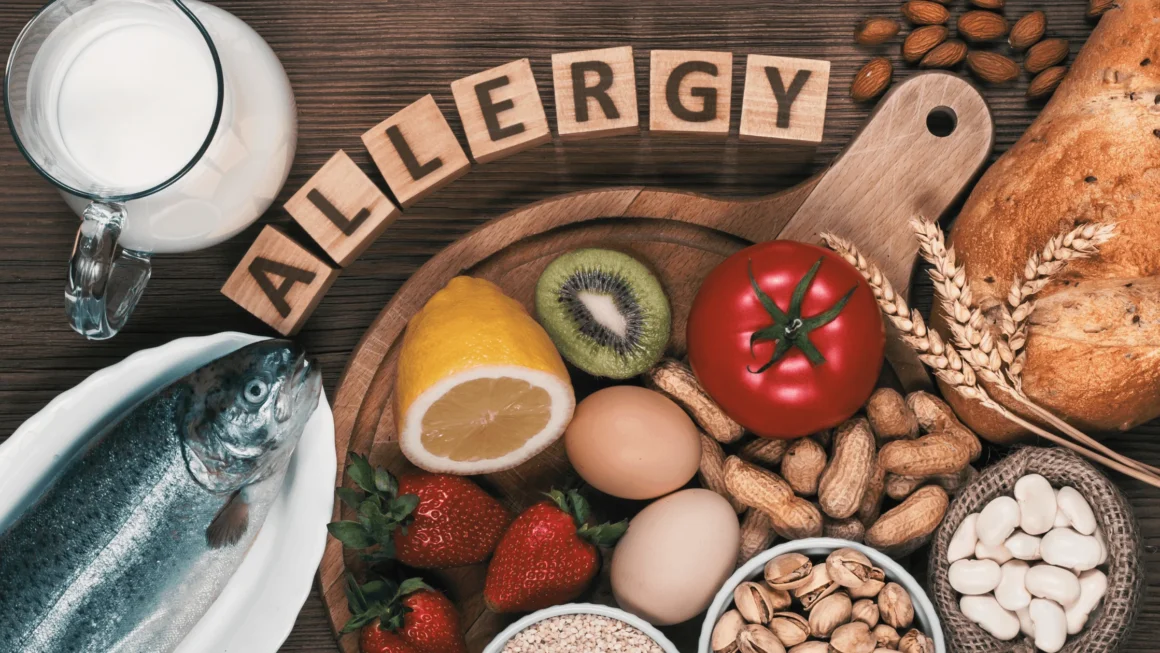Dining out is a cherished part of social life, travel, and culinary exploration – a chance to taste new flavours and connect with others. For vegans, navigating restaurant menus can sometimes feel like a challenge, requiring extra awareness and communication. This is especially true in places like Vadodara, Gujarat, where the cuisine is predominantly vegetarian (“Pure Veg”) but heavily features dairy products like ghee, butter, paneer, cream, and dahi (yogurt). However, with the right strategies, enjoying vegan restaurant experiences is entirely possible and increasingly enjoyable! This guide provides a comprehensive approach to vegan dining out, viewed through the lenses of nutrition, ethics, environment, and practical tips for finding options, understanding menus, and communicating effectively, specifically tailored for the vibrant vegan food scene of Vadodara and India.
LENS 1: Nutritional Analysis (Healthy Plates Away from Home)

Eating out often means less control over ingredients and preparation methods. For vegans seeking healthy choices, awareness is key, especially within Indian/Gujarati cuisine.
- Navigating Hidden Dairy & Fats: The biggest challenge in “Pure Veg” Indian restaurants is hidden dairy. Be vigilant:
- Ghee & Butter: Often used generously in dals, sabzis, tempering (tadka), and brushed on rotis/naans.
- Cream (Malai) & Yogurt (Dahi): Common in rich gravies (korma, makhani, shahi dishes), raita, lassi, and some breads/marinades.
- Paneer: A fresh cheese used extensively.
- High Oil Usage: Restaurant cooking often involves more oil than home cooking.
- Strategies for Healthier Choices:
- Communicate Clearly: Explicitly request “no ghee, no butter, no cream/malai, no dahi, no paneer.” Specify “use oil” (tel) for cooking/tadka.
- Choose Simpler Preparations: Opt for basic dal tadka (request oil tadka), dry vegetable stir-fries (sabzis like bhindi masala, aloo gobi – request less oil), steamed rice (plain chawal), plain roti/chapati/bhakri (request no butter/ghee). Tandoori dishes (if marinade is dairy-free) are often less oily than gravies.
- Balance Your Order: Ensure your meal includes protein (dal, chana masala), complex carbs (rice, whole wheat roti if available), and plenty of vegetables (order extra sabzi or salad).
- Portion Awareness: Restaurant portions can be large. Consider sharing dishes or packing leftovers.
- Avoid Creamy/Rich Descriptors: Menu items described as “Shahi,” “Makhani,” “Malai,” or “Creamy” almost always contain dairy.
- Nutritional Value: Simple vegan Indian meals like dal, sabzi, and roti/rice can be very nutritious, offering protein, fiber, vitamins, and minerals. However, beware of excessive oil and sodium. Remember restaurant meals are unlikely sources of Vitamin B12 unless from a specifically fortified vegan establishment. When ordering Indian food, what specific questions can you ask to ensure your dal or sabzi is prepared veganically and healthily (e.g., less oil)?
Nutritional Deep Dive: Decoding “Pure Veg” – Finding Truly Vegan Food
In India, “Pure Vegetarian” or “Vaishnav” signifies no meat, fish, or eggs. However, it almost always includes dairy products extensively. This is the most critical distinction for vegans dining out in India. You cannot assume “Pure Veg” means vegan. Key steps:
- Specify No Dairy/Ghee: Clearly state your requirements beyond just “vegetarian.”
- Question Specific Dishes: Ask about ghee in tadka for dal, cream/dahi in gravies, butter on roti/naan, paneer in mixed dishes.
- Stick to Simpler Items: Dry sabzis, oil-based dals, plain rice, plain roti (verify no ghee/butter) are generally safer bets if customization seems difficult.
- Sweets & Drinks: Assume most traditional Indian sweets (mithai), lassi, and milky chai contain dairy unless explicitly stated otherwise (e.g., at a vegan cafe).
Voice of Experience (Vadodara-based Nutritionist): “Eating healthy vegan meals out in Vadodara is possible but requires diligence. Focus on restaurants known to accommodate requests. Choose simple preparations like oil-based dals, dry sabzis packed with local vegetables, steamed rice, and plain roti (request no butter/ghee). Always communicate clearly about avoiding all dairy products, including ghee, which is very common here. Portion control is also key, as restaurant food can be richer.” – Dr. Reena Shah, Dietitian
LENS 2: Ethical Framework (Conscious Dining & Advocacy)

Dining out as a vegan involves ethical choices that extend beyond your plate.
- Supporting Vegan & Vegan-Aware Businesses: Choosing fully vegan establishments (like Oasis Vegan Treats in Vadodara, based on search results) or restaurants known to be knowledgeable and accommodating sends a clear message supporting compassionate businesses. This is ethical consumerism in action.
- Communication as Gentle Advocacy: Clearly, politely, and confidently stating your vegan requirements (“No animal products, including milk, butter, ghee, honey…”) is not just necessary for your meal, it also serves as gentle education for restaurant staff and management. Each request increases awareness and demand for vegan options.
- Normalizing Veganism: Eating out visibly as a vegan helps normalize plant-based choices in social settings, making it seem less unusual and more mainstream, especially in a culture where vegetarianism is common but veganism might be less understood.
- Minimizing Waste: Be mindful when ordering to avoid over-ordering and creating food waste, a significant ethical issue in the restaurant industry. Take leftovers home whenever possible (using your own container if the restaurant policy and local norms allow, though this is less common in India).
- Social Grace & Respect: When dining with non-vegans, focus on enjoying the company and your own delicious food. Answer questions about veganism positively if asked, but avoid being preachy or judgmental about others’ choices. Respectful dialogue is key. How can clear and positive communication with restaurant staff contribute to greater vegan awareness?
Hidden Benefits: Building Bridges & Finding Gems
Positive interactions where restaurant staff successfully accommodate vegan requests can build bridges, foster goodwill, and lead to discovering hidden gems – restaurants that become reliable go-to spots for compassionate dining. Sharing these finds helps the local vegan community.
Voice of Experience (Long-term Vegan Diner): “Dining out vegan in India has become much easier, but clear communication is still vital, especially distinguishing from vegetarian. I always politely explain ‘no dairy, no ghee’. Supporting restaurants that make an effort, whether fully vegan or accommodating, encourages more places to offer options. It’s about enjoying food and making compassionate choices visible.” – Anand Patel, Vadodara Resident
Critical Reassessment: Communication Challenges & Limitations
Be prepared for potential misunderstandings, especially regarding hidden ingredients like ghee or dairy powder in unexpected places. Language barriers can sometimes add complexity. Mistakes can happen in busy kitchens. Patience and clarity are essential, but sometimes options may remain genuinely limited, requiring flexibility or choosing simpler items.
LENS 3: Ingredient Science & Environment (Sustainable Plates Out)

Our dining choices have environmental consequences, and choosing vegan options significantly lightens the load.
- Lower Footprint Choices: Opting for vegan dishes based on legumes (dal, chana), vegetables (sabzi), and grains (rice, roti) has a drastically lower environmental footprint (GHG emissions, land use, water use) compared to ordering dishes containing meat (chicken, mutton) or dairy (paneer, creamy sauces, lassi). Dairy production, in particular, has a large environmental impact.
- Restaurant Food Waste: Restaurants globally are significant sources of food waste (due to over-portioning, spoilage, prep waste). While individual diners have limited control, choosing establishments known for managing waste better (if such information is available) or simply ordering mindfully helps.
- Local & Seasonal Potential: Restaurants can support local agriculture by sourcing seasonal produce. While this isn’t always transparent to diners, choosing dishes that feature vegetables known to be in season locally (check Vadodara’s current seasonal availability – e.g., mangoes, gourds, tomatoes, onions in summer) increases the likelihood of supporting lower food miles.
- Takeaway Packaging: Restaurant takeaways and deliveries generate enormous amounts of single-use plastic and other packaging waste. Dining in reduces this. If getting takeaway, request minimal packaging or explore restaurants using more sustainable options (less common in India currently).
- Restaurant Resource Use: Commercial kitchens consume significant energy and water. While diners can’t directly control this, supporting restaurants with stated sustainability initiatives (rare but growing) or simply choosing lower-impact vegan meals contributes indirectly. How does ordering a Chana Masala instead of a Paneer Butter Masala significantly reduce the environmental impact of your restaurant meal?
Market Transformation Map Suggestion: Data showing the percentage increase of restaurants explicitly mentioning “Vegan Options Available” on platforms like Zomato or Swiggy in major Indian cities like Vadodara over the last 3-5 years.
Voice of Experience (Sustainable Restaurant Consultant): “Diners hold power. Every time someone requests a vegan option or chooses dal over a meat curry, it sends a market signal. Restaurants respond to demand. Choosing plant-based significantly cuts the environmental cost of your meal. Additionally, being mindful about takeaway packaging is crucial – it’s a huge source of restaurant-related waste.” – Rohan Kapoor, Green Dining Initiative
LENS 4: Everyday Practitioner’s Experience (Finding, Ordering & Enjoying in Vadodara)

Here’s the practical know-how for successfully navigating vegan dining out in Vadodara and similar Indian cities.
Finding Vegan-Friendly Spots:
- Apps & Websites:
- HappyCow: The go-to global app/website for vegan/vegetarian listings. Will show dedicated vegan places (like Oasis Vegan Treats in Vadodara, per search results) and veg-friendly ones with reviews from other vegans (crucial!).
- Zomato/Swiggy: Use filters for “Vegan Options” or “Pure Veg.” Caution: “Pure Veg” DOES NOT mean vegan – use this filter primarily to find vegetarian restaurants where you then need to inquire further. Read recent reviews mentioning vegan requests.
- Google Maps: Search “vegan restaurants Vadodara” or “vegan food near me.” Reviews can be helpful.
- Local Knowledge: Ask local vegan Facebook groups, WhatsApp groups, or vegan friends for recommendations – this often yields the best, most up-to-date information on accommodating places in Vadodara.
- Word of Mouth: Talk to staff at health food stores or vegan cafes.
Decoding Menus & Communicating (Crucial in Gujarat/India):
- Identify “Usually Safe” Bases (BUT ALWAYS VERIFY PREPARATION):
- Dals: Dal Tadka, Dal Fry (ask for oil tadka, no ghee/butter/cream). Dal Makhani is never vegan unless specified (heavy cream/butter).
- Dry Sabzis: Aloo Gobi, Bhindi Masala, Baingan Bharta (ask if eggplant roasted plain or with ghee/butter), Mixed Vegetable stir-fries (request oil, no cream/paneer).
- Rice: Plain Steamed Rice (Chawal), Jeera Rice (ask if made with oil or ghee). Pulao/Biryani often use ghee – inquire carefully or avoid if unsure.
- Breads: Plain Roti/Chapati/Phulka (request NO butter or ghee brushed on top). Naan almost always contains dairy (yogurt/milk in dough) – avoid unless specified vegan. Bhakri (millet flatbread common in Gujarat) might be vegan if made simply with flour/water/oil – ask.
- Identify High-Risk Dairy Items: Anything with Paneer, dishes described as Makhani, Malai, Shahi, Korma, Pasanda. Raita, Lassi, most Mithai (sweets), Gulab Jamun, Kulfi, often Gajar ka Halwa. Check soups (cream base?).
- Polite & Specific Communication:
- Start with: “Namaste. Mein vegan hoon.” (I am vegan).
- Explain clearly: “Iska matlab mein pashu utpaad nahi khaata/khaati hoon – jaise doodh, dahi, paneer, ghee, makhan, shahad (honey) nahi.” (This means I don’t eat animal products – like milk, yogurt, paneer, ghee, butter, honey no). Adjust for male/female speaker.
- Ask about specific dishes:
- “Kya yeh [Dish Name] tel mein bana hai ya ghee mein?” (Is this [Dish Name] made in oil or ghee?)
- “Kya isme malai ya dahi hai?” (Does it contain cream or yogurt?)
- “Roti/Chapati bina ghee/makhan ke milegi?” (Can I get the roti/chapati without ghee/butter?)
- Be Patient & Appreciative: Thank staff for their help. If they seem unsure, opt for the simplest, safest options.
- Ordering Strategy: If in doubt, order simple components: “Ek plate plain chawal, ek tel wali dal tadka (no ghee), aur ek sukhi aloo gobi sabzi (kam tel, no ghee/cream). Aur do plain roti, bina makhan ke.” (One plate plain rice, one oil-based dal tadka, one dry potato-cauliflower sabzi (less oil, no ghee/cream). And two plain rotis without butter.)
What simple Hindi or Gujarati phrase for explaining vegan needs would be most useful for you when dining out?
Daily Impact: The “Safe Bet” Order
Develop a go-to “safe bet” order for standard Indian vegetarian restaurants when communication is difficult or options seem limited (e.g., Plain Rice + Oil Tadka Dal + Plain Roti without butter). It ensures you get a basic vegan meal.
Voice of Experience (Local Vadodara Vegan): “Eating out vegan here means being specific! ‘Pure Veg’ isn’t enough. I always ask ‘ghee vagar, tel ma?’ (without ghee, in oil?). HappyCow helps find places, but local vegan groups on Facebook often know which standard restaurants are genuinely accommodating if you ask clearly. Simple dals and dry sabzis are usually the easiest to get made vegan.” – Rohan Shah, Vadodara Resident
Alternative Approaches: Cuisine Focus & Cafes
- South Indian Cuisine: Often has many naturally vegan options (idli, plain dosa, vada, sambar – but always check for ghee in sambar/dosa prep and dairy in chutneys).
- Health Cafes: Newer cafes focusing on health food are often more knowledgeable about vegan requirements and may have clearly labelled options or use plant milks/alternative ingredients. Explore these in areas like Alkapuri or Race Course Road in Vadodara.
- International Cuisine: Thai, Vietnamese, or Ethiopian restaurants (if available) often have many vegan or easily adaptable dishes (check for fish sauce in Thai/Vietnamese).
PERSPECTIVE INTERSECTION MATRIX
- Nutrition & Communication (Lens 1 & 4): Achieving nutritional goals (avoiding excess fat/sodium) (Lens 1) when dining out requires effective communication and specific ordering strategies (Lens 4).
- Ethics & Restaurant Choice (Lens 2 & 4): Supporting vegan/vegan-friendly businesses (Lens 2) is a practical choice made using apps or local knowledge (Lens 4). Polite advocacy (Lens 2) happens during ordering interactions (Lens 4).
- Environment & Menu Choice (Lens 3 & 4): Choosing lower-impact vegan dishes (Lens 3) is a practical decision made from the menu options available (Lens 4). Dining in vs. takeaway impacts packaging waste (Lens 3, 4).
- Practical Challenges & Knowledge (Lens 4 & 1/2): Navigating menus and communication challenges (Lens 4) requires awareness of hidden ingredients (Lens 1) and is often motivated by ethical commitment (Lens 2).
- Cultural Context (All Lenses): Successfully dining out vegan in Vadodara/India requires understanding the “Pure Veg” distinction (Lens 1, 4), navigating dairy prevalence respectfully (Lens 2, 4), and leveraging local staples (Lens 1, 3, 4).
MISCONCEPTION ANALYSIS
| Misconception | Reality |
| It’s nearly impossible to find truly vegan food in Indian restaurants due to ghee/dairy. | While vigilance is essential, it’s not impossible. Many basic dals, dry sabzis, rice, and plain rotis can be prepared vegan with clear instructions. Communication is the absolute key. Dedicated vegan/health cafes are also emerging. |
| “Pure Vegetarian” restaurants in India are safe for vegans. | False. “Pure Veg” means no meat, fish, or eggs, but almost always includes milk, butter, ghee, paneer, and dahi extensively. This is the most critical point of confusion – vegans MUST specify no dairy/ghee in Pure Veg places. |
| Vegan options when eating out are always just boring salads or plain vegetables. | Many flavourful Indian dishes are naturally vegan or easily adapted (Chana Masala, Aloo Gobi, Dal Tadka, Baingan Bharta, many sabzis). Exploring different cuisines (South Indian, Thai) also offers exciting vegan options beyond salads. |
| Asking detailed questions about ingredients is rude or too much trouble for staff. | Polite, clear, and specific questions are necessary for dietary needs and generally well-received, especially in customer-service oriented environments. It also raises awareness. Being patient and appreciative helps ensure a positive interaction. |
| You can tell if a dish has ghee or dairy just by looking at it. | Often impossible! Ghee can be used subtly in tadka or brushed on roti. Cream or yogurt can be blended into gravies. Paneer might be hidden. Always ask, never assume. |
KEY TURNING POINTS
- Growth of Veganism Globally & in India: Creating market demand that restaurants slowly begin to recognize.
- Development of Vegan Dining Apps: Tools like HappyCow provide dedicated platforms for finding and reviewing vegan/veg-friendly establishments.
- Mainstream App Filters: Larger platforms like Zomato/Swiggy incorporating “Vegan Options” filters (though accuracy needs vetting via reviews/calling).
- Increased Chef Awareness/Training: More culinary professionals becoming familiar with veganism and plant-based techniques.
- Rise of Vegan Cafes & Restaurants: Dedicated establishments offering fully vegan menus, providing safe havens and raising the bar (even if still limited in number in cities like Vadodara).
- Allergy Awareness: Increased general awareness of dietary restrictions (like dairy allergies) making kitchens slightly more accustomed to modification requests.
SYNTHESIS & RECOMMENDATIONS
Enjoying the diverse culinary landscape while adhering to a vegan lifestyle, even in dairy-loving regions like Gujarat, is an achievable and rewarding part of the vegan dining out experience. Success hinges on preparation, clear communication, and knowing what to look for. Utilize apps and local resources to find promising spots, understand the crucial difference between “Pure Veg” and truly vegan (no dairy/ghee!), and communicate your needs politely but specifically. Focus on naturally plant-based dishes or simple modifications, be patient, and celebrate the growing number of accommodating establishments. With the right approach, you can confidently explore Vadodara’s restaurants and enjoy delicious, compassionate meals away from home.
Recommendations for Vegan Dining Out Success (Especially in India):
- Research Ahead: Use HappyCow, Zomato/Swiggy (with caution), Google Maps, and local vegan groups to identify potential restaurants (fully vegan, vegan-friendly, or accommodating vegetarian places). Read recent reviews.
- Communicate Clearly & Specifically: State you are vegan and list exclusions: “No milk, dahi, paneer, ghee, butter, cream, honey.” Use local language phrases if helpful. Mentioning a “dairy allergy” can sometimes emphasize seriousness, but use honestly.
- Ask Detailed Questions: Don’t assume. Ask about ghee in tadka/roti, cream/dahi in gravy, paneer in mixed dishes.
- Choose Simple Dishes When Unsure: Opt for oil-based dal tadka, dry sabzis (request less oil), steamed rice, plain roti (no butter/ghee).
- Verify “Pure Veg” is Not Enough: Understand this label includes dairy/ghee and requires specific vegan requests.
- Be Patient & Polite: Communicate requests calmly and clearly. Thank staff for their efforts.
- Explore Vegan-Focused Places: Prioritize fully vegan or health cafes when available for guaranteed options and knowledgeable staff (like Oasis Vegan Treats in Vadodara).
- Focus on the Experience: Enjoy the social aspect and the flavours, even if choices are sometimes limited.
FURTHER AREAS OF EXPLORATION
- Guide to Vegan Street Food Survival in India (Chaat, Snacks)
- Vegan Options in South Indian Cuisine (Beyond Dosa/Idli – Checking Ghee/Dairy)
- Phrases for Ordering Vegan Food in Hindi & Gujarati
- Reviewing Vegan & Vegan-Friendly Restaurants/Cafes in Vadodara
- How to Host Dinner with Vegan & Non-Vegan Guests (Restaurant Choice)
- Navigating Indian Sweets (Mithai) as a Vegan (Challenges & Alternatives)
- The Rise of Veganism in Tier-2 Indian Cities





